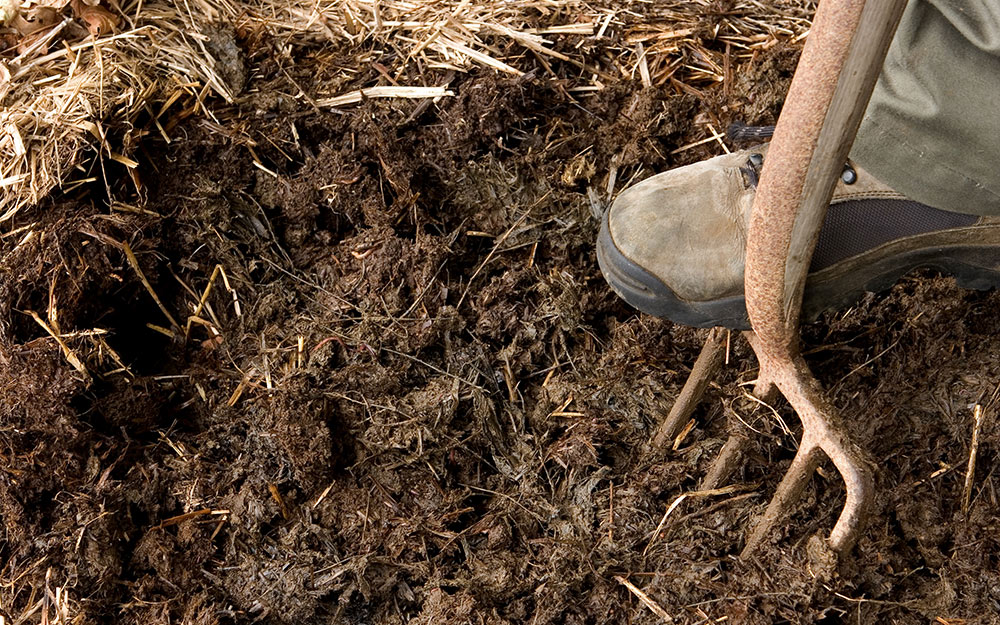Inspiration Guide
How to Get Started Growing Organic Gardens
Growing organic produce means having your own crop of healthy, nutritious vegetables and fruits. Growing organic has never been easier, but it can be intimidating to get started. Introductions to organic gardening begin with long discussions of soil composition, compost piles, controlling weeds organically, seed starting and pest management. These are all components of successful, long-term organic lawn care and gardening practices. But for the novice gardener, a few basic principles will get you started.
Principles of Organic Gardening
Organic gardening is simply growing plants without synthetic fertilizers and pesticides. Achieving this goal requires knowledge as well as products such as organic seeds and organic plant food. Instead of reaching first for a chemical to solve problems, organic gardeners employ solutions that are kind to the environment and produce the best edibles possible.
Organic gardening features three main components: soil, plants and problem-solvers. There are other important steps, of course, like making sure the site gets at least 6 to 8 hours of sun each day and is close to a water source. If you’re new to vegetable gardening, review the basics of site selection and planting vegetables.

Soil in Organic Gardening
Ideally, organic garden soil is rich in humus and has a texture described as loamy. But what does that mean? Humus is a five-dollar word for organic matter, the foundation for feeding plant roots.
Loam is composed of sand, silt and clay. With the correct proportions, these ingredients provide the right kind of drainage for your garden. Too much clay and the water has nowhere to go; too much sand and it drains away too quickly. A friable, loamy soil holds water long enough for the plants to drink without waterlogging them.
To develop this type of soil, start with organic garden soil and continue to test and amend soil each year. Start composting at home to use in your garden.
Tip: For gardening success in small spaces, pick up organic potting mix specially formulated for containers. These products have larger amounts of peat and other ingredients that hold onto water in quick-draining containers.

Organic Seeds and Seedlings
As exciting as soil is, the real fun begins when you select plants to grow in your edible garden. Organic gardeners used to rely on seeds, seed saving and heirloom seeds from fellow gardeners. Organic seeds and seedlings, however, are now available online and in-store.
When growing organic, you don’t have to plant seedlings alone. Many gardeners have a mix of seeds and seedlings to start their gardens. There’s a large selection of organic seeds in the Garden Center, and all seeds sold at The Home Depot are non-GMO. Get started with seed sowing.
Tip: Be sure to get your seedlings in the ground as soon after purchase as possible, even if the weather is still chilly. Use row covers or other frost protection if you live in an area with late-season frosts.

Solutions to Garden Problems
The third key component of organic gardening is problem-solving. There are effective organic treatments for garden pests, diseases and weeds.
Weeds:
- Weeds compete with your crops for sunlight, food and water. Weeds provide homes for insects and diseases that can spread to your crops. The earlier in the season you embrace natural ways to kill weeds, the easier it will be in the height of summer with fewer weeds crowding your garden and lawn.
- To get a handle on weeds, the gardener’s best defense is a good offense. That is, build up healthy garden beds, cultivate good gardening habits, and weeds will become less of a problem over time. A 3-inch layer of organic mulch such as straw or composted leaves will keep down weeds, retain moisture and allow oxygen to reach the roots of your plants so they can grow strong.
- Killing weeds organically can be tricky, but there are many alternatives to chemical weed killers. The first line of defense is always pulling weeds by hand. You can use a hori hori knife or hoe to help loosen weeds from the roots, but this method works best if you have small patches of young weeds with tender roots. This is also not ideal if you have physical issues; manual weed control can be hard on the back and knees.
- There are a number of commercially produced organic weed killers that employ natural ingredients like corn gluten, citrus and fatty acids, and other organic herbicides to prevent and kill weeds in the garden and on the lawn. Organic weed control products can be highly effective, but they often take longer to work than standard weed killers, and the instructions and treatment schedules have to be rigorously adhered to in order to get the most out of the them.
Pests:
- One of the best methods of organic pest control is to invite beneficial insects. Ladybugs, lacewings, butterflies, bees and dragonflies are vital to an organic garden. Learn more about beneficial insects like ladybugs and dragonflies.
- Bad bugs like aphids, spider mites, caterpillars, slugs and snails are unwelcome. Organic controls like Bt, Neem oil and insecticidal soap are effective. A good shot of water from the hose can knock bad bugs off of your prized plants.
As your garden grows and you increase your knowledge of organic gardening, you’ll find that a journal of your experiences, whether digital or handwritten, will help you learn from your garden. Recording garden designs, planting dates, weather, pests and how you managed them, and events like harvest dates will aid you as you plan your next organic garden.
Whether you need the right planters, seeds or garden soil, The Home Depot delivers online orders when and where you need them.

